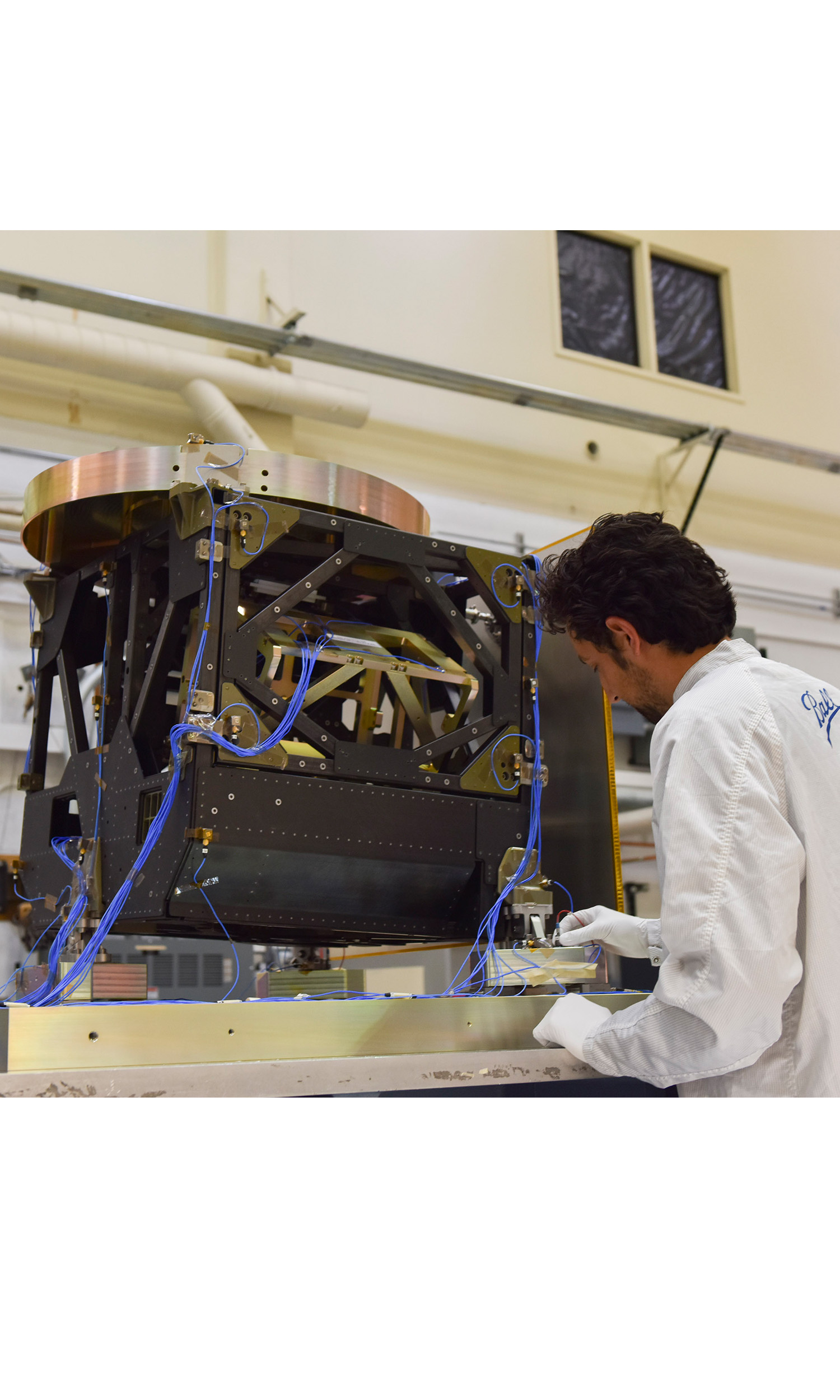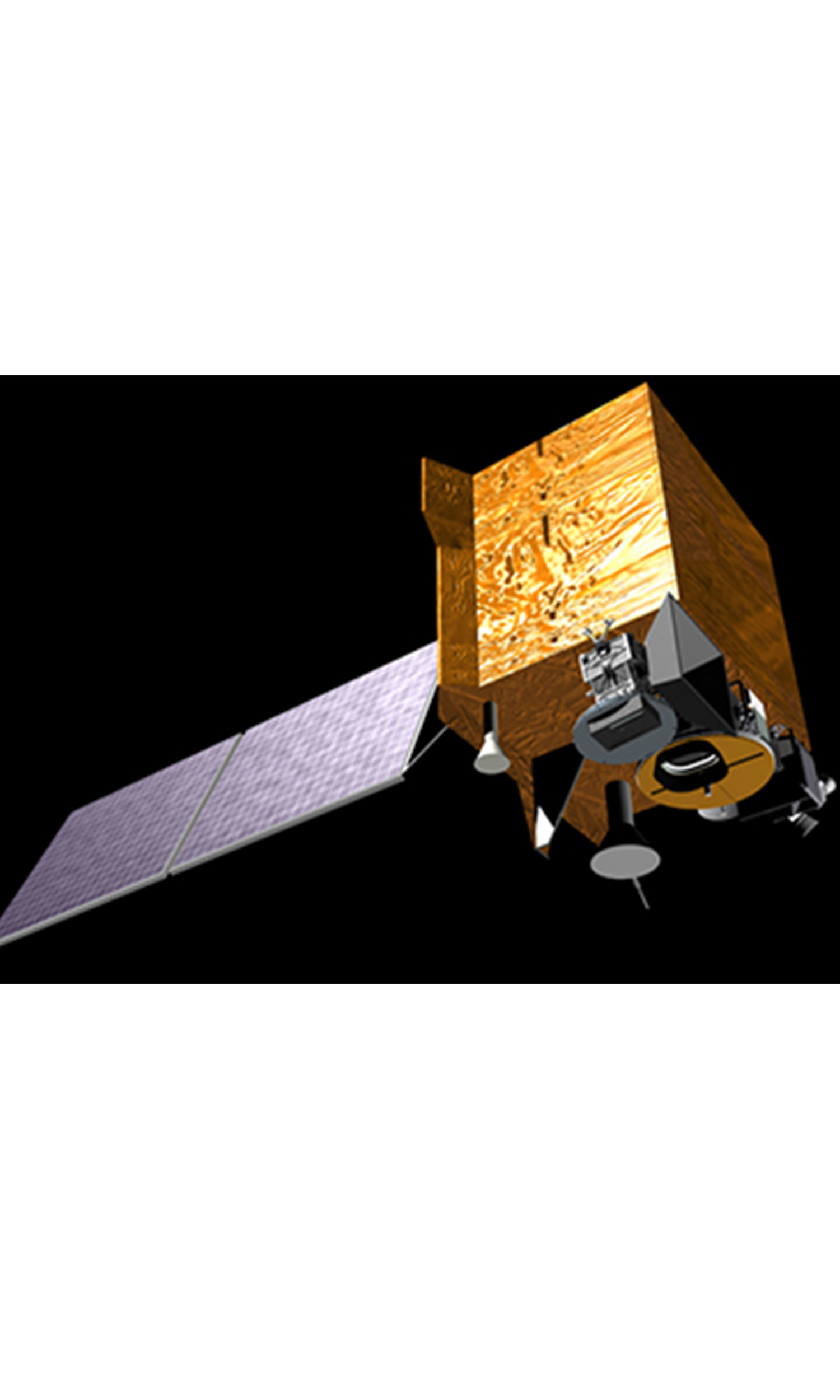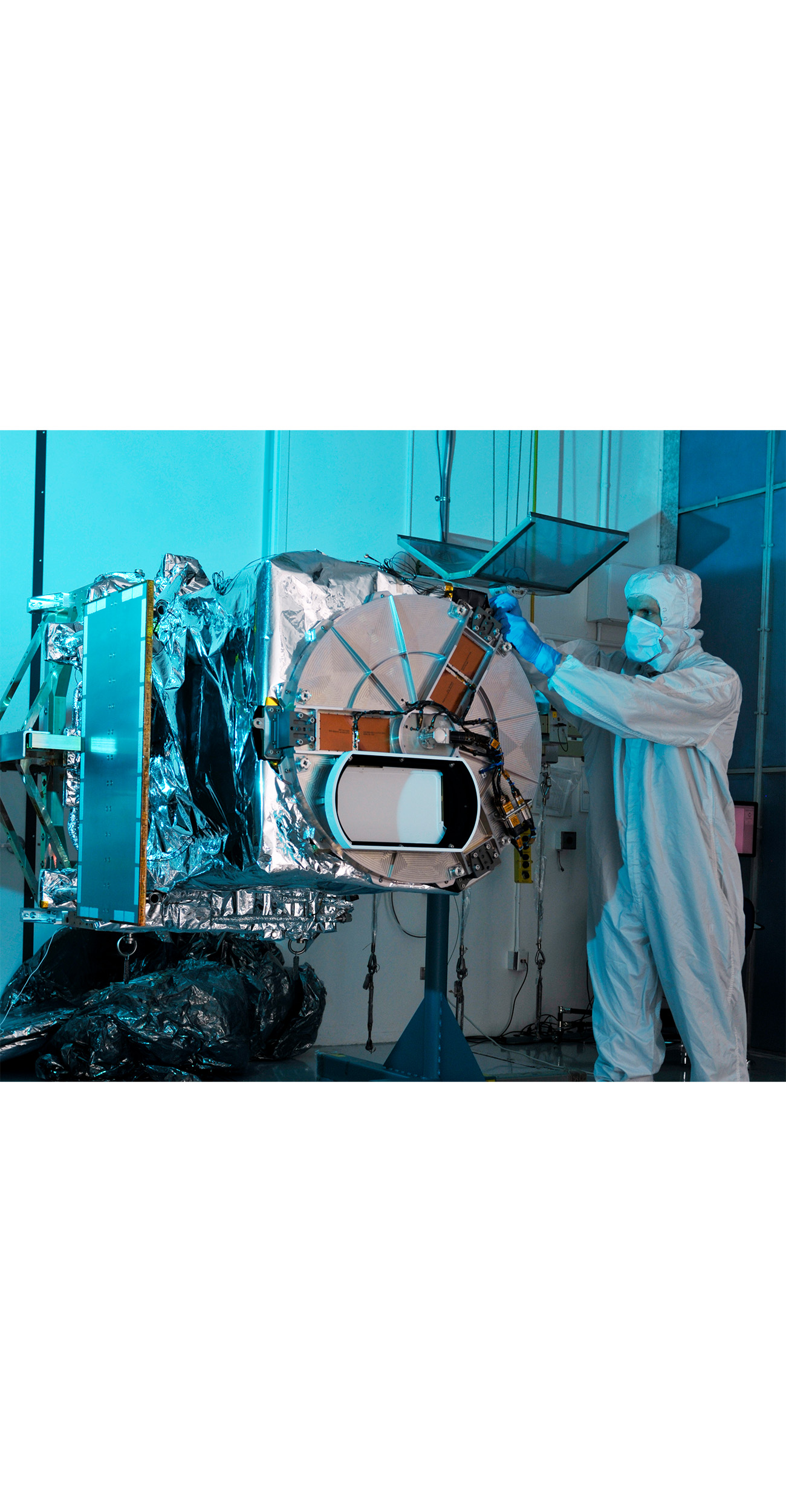

Geostationary Environment Monitoring Spectrometer
Early warnings
Our GEMS instrument which launched in 2020 is helping to improve early warnings for dangerous pollution events across the Asia-Pacific region and also monitor long-term climate change.
A geostationary scanning ultraviolet-visible spectrometer, GEMS is monitoring trans-boundary pollution events for the Korean peninsula and Asia-Pacific region. Our instrument provides high spatial and temporal resolution hourly measurements of ozone, its precursors and aerosols.

What We Did
GEMS Instrument Provider
Ball Aerospace built GEMS under a commercial contract with the Korea Aerospace Research Institute (KARI) for the National Institute of Environmental Research in the Ministry of Environment of South Korea. Together, Ball and KARI engineers designed, fabricated and tested the GEMS instrument. Integrated onto KARI's GEO-KOMPSAT-2B satellite, GEMS launched successfully on February 18, 2020.
GEMS is the Asian element of a global air quality monitoring constellation of geostationary satellites that includes the Tropospheric Emissions: Monitoring of Pollution (TEMPO) spectrometer. Ball Aerospace built TEMPO for NASA Langley Research Center and Harvard Smithsonian Astrophysical Observatory. Both GEMS and TEMPO leverage our know-how and the tech we’ve developed for earlier ultraviolet-visible instruments.

Tropospheric Emissions: Monitoring of Pollution
Watching North American air quality
How does air pollution impact global weather and climate? Air pollution measurements from NASA’s TEMPO mission will give scientists the answer.
The TEMPO instrument, a geostationary ultraviolet/visible spectrometer, will provide daylight measurements of ozone, nitrogen dioxide, sulfur dioxide and other pollutants across North America, from Mexico City to Canada and from coast to coast. This data will advance air quality research by determining how air pollution affects climate change and air quality on a continental scale.
TEMPO launched in April 2023 from Cape Canaveral Space Force Station. It is hosted on Intelsat 40e, a commercial satellite built by Maxar Technologies, and will make observations from a geostationary vantage point, about 22,000 miles above Earth’s equator.
TEMPO Mission Page
TEMPO
Click this link to learn more about how TEMPO will observe Earth's atmosphere.

What We Did
TEMPO Instrument Provider
TEMPO’s high resolution will allow pollution tracking at micro urban scales (an area approximating 1.25 x 2.8 miles) every hour and is expected to improve air quality prediction accuracy by 50 percent. The instrument was developed under a firm, fixed-price contract.
Ball Aerospace developed the TEMPO instrument in tandem with the Geostationary Environmental Monitoring Spectrometer (GEMS) in order to capture design efficiencies between the two instruments, which share the same technology. GEMS is a joint development effort by Ball and the Korea Aerospace Research Institute (KARI), South Korea, and is the Asian element of a global air quality monitoring constellation that includes TEMPO.
Collaboration Across the Industry
The TEMPO team included the Smithsonian Astrophysical Observatory; NASA’s Langley Research Center; NASA’s Goddard Space Flight Center; the U.S. Environmental Protection Agency; and several U.S. universities and research organizations. The team prepared for TEMPO data through airborne flights using the Ball-built GeoTASO instrument, a UV-Visible sensor designed to deliver hyperspectral data similar to that expected from TEMPO. GeoTASO data helped the TEMPO team test and refine their trace gas and aerosol retrieval approaches.
